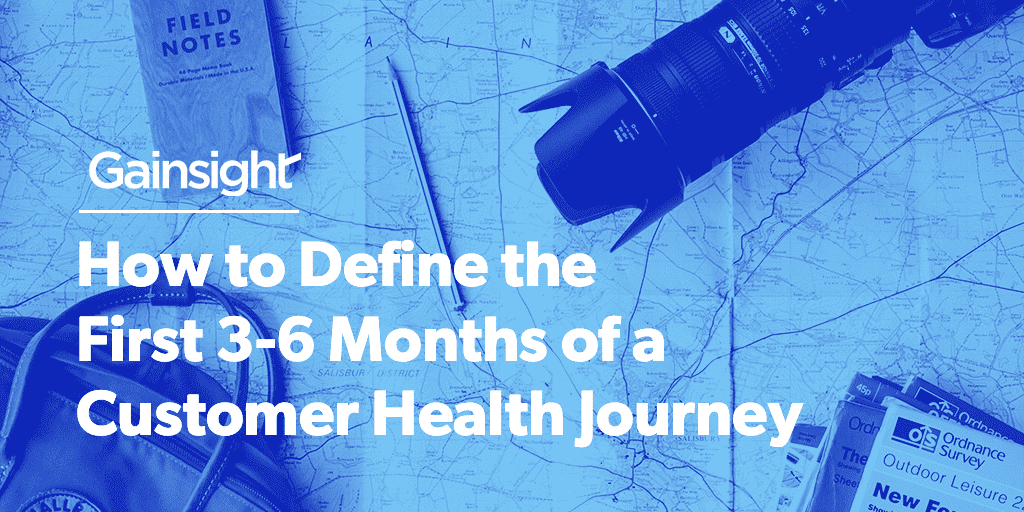This post was co-authored by Carolin Chhor.
We’re starting to see more and more often Customer Success teams serving as the intersection between all kinds of departments Marketing, Product, Sales, and Support.
What’s the one thing these teams have in common? The customer, of course! So it makes sense that this is happening—both organically and as part of a customer-centric strategy.
But the critical part of these departments working together to deliver customer success depends on how we define the customer’s journey. One framework that I found very powerful in defining a customer health journey was the Primary Data Source Types framework. I encourage you to read it if you haven’t. Here’s the short version: Your data sources define the business that can be built. So far, so obvious! With this framework in mind, I wanted to look at some questions to consider when deciding on how certain types of metrics from those departments play a role in defining the overall health of a customer in the first three-to-six months.
Engagement data
Information that we gather from campaigns and from regular, frequent interaction can determine how news, articles, and educational material can be created to cater to certain audiences. If we can characterize a team or person based on some common qualities, we can curate tracks that align with what they do. You may cater to over four predominant persona types and they may all use your application for a specific purpose. How, based on your interactions and data, can you create a happy path (say with onboarding emails) that’ll guide them towards success? Let’s look at three specific ways:
- Gather data about their role to segment customers and design onboarding flows specific to their use case.
- Identify the most common use cases and create content (blogs, videos, ebooks, etc.) around it
- Track how many of their teammates attend your company’s events.
Usage Data
Taking a look at usage from the beginning of their journey to today can provide us with insight that’ll guide the CS and growth teams to how to shape the product towards their specific goals.
Within the first three months, take a look at the features that have been activated, how often they sign-in, etc. This is the time to spot any usage trends to better understand most commonly used features and begin bucketing them into validated personas. These variables serve as health indicators as well allowing us to catch possibility of early churning or a promising candidate for renewal.
- Validate features provided in the app against who our users are. Not only that, we can also cater our design for the majority of users.
- Think about how to design an in-app onboarding experience.
- Identify existing pain-points based on repeat use cases.
- The Product team can see what can be improved, added, and/or enhanced.
Subscription Data
One challenge here can be getting intro calls to get a better idea of where a team stands and their goals. Some metrics here can be based on the number of seat increases over a defined time period, how frequently they respond, or growth within a team over a period of time. Definitely include Sales early in the conversation since oftentimes for larger teams, it can take months for an agreement to be made. Can CS spot opportunities for growth and loop in Sales when possible? Maintain that conversation, communication, and relationship early on so when it does come time for renewal, it is much easier to bring up the discussion.
- Pipe updates to the Sales team regarding team expansion to build the relationship.
- Engage in internal knowledge transfers right before close and at close to ensure all outcomes and metrics of the contractual agreement are captured and able to be tracked from the moment the contract is signed.
- A lot of time, scopes of work (SOWs) or Contracts do not list the specific entitlements that the customer gets. If this is the case, then work with the other teams at your company to achieve purchase parity. This is where the metrics we’re tracking throughout the customer lifecycle are clearly defined in the SOW/Contract so as not to lead to confusion on the expectations and goals for your CS team.
Support Data
This is the channel in which we can dive in deeper on issues and pain points customers are experiencing—support data can uncover a lot of insight into questions like what are common issues, how active their team is, and what amount is healthy is in terms of support ticket volume. This information can tell us how regularly they use the app, and based on their satisfaction, we can see if multiples of the same issues come up and then raise it to Product. Often, having an in person conversation in addition to just tracking the number of tickets carries a lot more weight when addressing this to the Product team. Not only that, but being privy to commonly asked questions can help us prepare and inform others about whether something is expected within a platform or not.
- Check a team’s activity based on number of submitted tickets each quarter.
- Identify opportunities in the support ticket where someone on the Success team could chime in.
The first three-to-six months after contract sign is pivotal to setting the tone for how customers interact not just with your product, but with your company at a cross-functional level. To a customer, you’re all one entity! Understanding their usage and interaction with the product provides us with milestones indicating whether a team is likely to churn (minimal usage, only one feature) or if a team will likely renew (growing team, regular usage, etc). Collaborating across your teams is vital to help align our onboarding message at a cross-functional level, ultimately leading to a unified customer experience.

